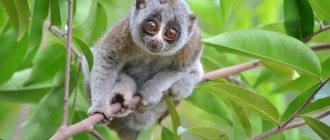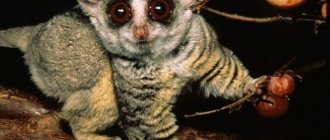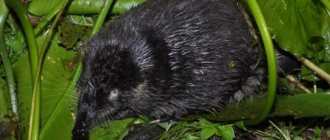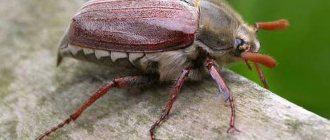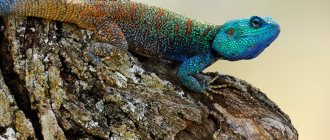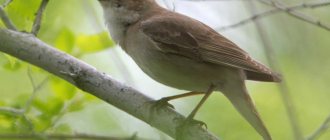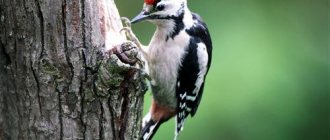Ring-tailed lemurs sit on a tree in Isalu National Park, Madagascar. (Image credit: Arterra/Contributor/Getty Images)
Lemurs are a unique group of primates native to Madagascar, an island off the coast of East Africa. Although lemurs are related to apes, they form a separate branch of the primate family tree and are classified as a superfamily consisting of five distinct lemur families and over 100 different species.
According to the Lemur Conservation Foundation, lemurs have pointed snouts with wet noses and rely more on their sense of smell than monkeys. The superfamily Lemuridae includes ring-tailed lemurs (Lemur catta), popularized by the Madagascar cartoon franchise, and Madagascar bats (Daubentonia madagascariensis), which are not so cute at first glance. The appearance, diet and habitat of different lemur species vary, but each plays a different role in Madagascar's rich and diverse ecosystems. ()
After assessing the world's lemur population in 2012, the International Union for Conservation of Nature (IUCN) named lemurs as the most endangered mammal on Earth. According to the IUCN, almost all lemurs living today are critically endangered. ()
Origin of the species and description
Photo: Ring-tailed lemur
The word "lemur" means evil, ghost, spirit of the dead. According to legend, harmless animals are undeservedly called evil only because they frightened travelers from Ancient Rome who first visited Madagascar. The Europeans sailed to the island at night and were very frightened by the glowing lights of the eyes and the eerie sounds that came from the night forest. Fear has big eyes, and since then the cute animals on the island have been called lemurs.
The ring-tailed lemur belongs to the lemurid family and is also the only representative of the lemur genus. Maquis are mammals, lower wet-nosed primates from the lemur family. It is the wet-nosed primates that are among the most ancient primates on our planet. They can deservedly be called the aborigines of Madagascar. Scientists have noted, according to the fossilized remains of ancient lemurs, that the first lemur-like primates lived 60 million years ago in Africa.
Video: Ring-tailed lemur
When Madagascar moved away from Africa, the animals moved to the island. In total, there were more than one hundred species of lemurs. With human intervention in the habitat of primates, the population of these animals began to decline. 16 lemur-like species have disappeared.
Three families of lemurs became extinct:
- megadalapis (koala lemurs) - became extinct 12,000 years ago, their weight was 75 kg, they ate plant foods;
- paleopropithecus (genus Archiondri) - disappeared in the 16th century of our time;
- archaeolemuridae - lived until the 12th century, weight 25 kg, habitat - the entire island, omnivores.
The largest species of lemurs, which were similar in size to a gorilla and weighed up to 200 kg, disappeared the fastest. They led a mainly diurnal lifestyle. They were clumsy. They became easy prey for hunters of those times - connoisseurs of meat and high-quality skins of these primates.
Species of lemurs that have survived to this day are divided into five families:
- lemurs;
- dwarf;
- hand-footed;
- indriaceae;
- Lepilemuraceae.
Today the island is home to about 100 species of lemur-like primates. The smallest is the pygmy lemur and the largest is the indri. More new species of lemurs are being discovered and another 10-20 species will be described in the future. Lemurids have not been studied enough in comparison with other primates.
Can a primate live in captivity?
These cute little primates also take root well at home. The domestic lemur lives in captivity up to 14-15 years.
The small slow loris is the best one to settle into the house. These animals are affectionate, neat, easy to tame and even know some commands.
It is necessary to purchase a lemur only in special nurseries. In order for the animal to feel comfortable, it should install a large enclosure in a separate room, otherwise the lemur will be frightened by sharp sounds and strangers. It is also necessary to exclude drafts in the room.
This is interesting: What serves as the heart of an earthworm?
Appearance and features
Photo: Ring-tailed lemur from Madagascar
Lemurs look like monkeys from another planet. Because of their large eyes, painted with dark circles, they resemble aliens. They can be considered relatives, but they are completely different animals and differ in many characteristics. For a long time, wet-nosed primates were mistaken for prosimians. The main difference with primates is a moist nose like a dog’s and a very well developed sense of smell.
Ring-tailed lemurs are easily recognized by their long, bushy tail, which is decorated with black and white alternating ringed stripes. The tail is raised like an antenna and curved in a spiral. With the help of their tail, they signal their location, balance on trees and when jumping from branch to branch. Lemurs need a tail during “smelly” fights, during the mating period. If it is cool at night or early in the morning, then the animals warm themselves with the help of their tail, as if they were putting on a fur coat. The tail is longer than the animal's body. Approximate ratio 40:60 cm.
Lemurs are slender, fit - ready for action like cats. Nature has endowed these animals with beautiful colors. The color of the tail appears on the face: black near the eyes and mouth, and white cheeks and ears. The back can be gray or brown with shades of pink.
The inside of the ring-tailed lemur's body is elegantly covered with white fur. And only the head and neck are completely dark gray. The muzzle is sharp, reminiscent of a fox. The coat is short, thick, soft, like fur.
There are five toes on the paws, the anatomy of the limbs is like that of monkeys. Thanks to this feature, lemurs tenaciously hold on to tree branches and easily retain food. The palms are covered with black skin without hair. Cattas have nails on their toes and only the second toe of their hind legs grow claws. Animals use them to comb their thick fur. The teeth of lemurs are located specifically: the lower incisors are noticeably closer and inclined, and there is a large gap between the upper ones, located at the base of the nose. Typically, lemurs of this species weigh 2.2 kg, and the maximum weight reaches 3.5 kg, with the weight of the tail being 1.5 kg.
Interesting Facts
In the photo of the lemur you can see a medium-sized primate.
The smallest representative of lemurs is the dwarf mouse lemur. The weight of the animal can reach up to 50 g, and the body size with tail does not exceed 22 cm.
Rat lemur
Extinct lemurs were found in Madagascar that weighed approximately 200 kg. Today, the short-tailed indri is recognized as the largest lemur.
The body length varies from 50 to 70 cm. The weight of the largest primates is 7.5 kg.
Where do ring-tailed lemurs live?
Photo: Lemur cat family
Lemurs are endemic. In natural conditions they live only on the island of Madagascar. The island's climate is variable. It rains from November to April. From May to October there are more comfortable temperatures with minimal precipitation. The eastern part of the island is dominated by tropical forests and a humid climate. The central part of the island is drier, cooler, and dotted with rice fields. Lemurs have adapted to survive in various conditions.
Ring-tailed lemurs have chosen to live in the southern and southwestern parts of Madagascar. They occupied a third of the island. They live in tropical, deciduous, mixed forests, in dry open areas covered with bushes, from Fort Dauphin to Monradov.
These regions are dominated by tamarind trees, the fruits and leaves of which are a favorite delicacy of lemurs, as well as other large trees reaching 25 m in height. Shrub forests are drier and lower in height.
There is a population of ring-tailed lemurs in the Andringitra Mountains. They love to wander along the mountain slopes. They jump skillfully over sharp rocks, causing absolutely no harm to their health. The environment changed with the arrival of man on the island. Active deforestation began to create pastures and agricultural land.
Climate
Different parts of our planet have different climates.
Climate is a long-term weather pattern in a certain area. Knowing the weather in a certain area, you can find out what the climate is like there.
Continental
- Sunny, warm summer
- Cold, snowy winter
- Various trees
- Many animals
Tropical
- Sunny, hot summer
- Winter rain and sun
- A tropical forest
- Monkeys, birds
- Summer rain and sun
- Cold, snowy winter
- No trees
- Reindeer
- Sunny in summer, sometimes cloudy
- Winter rain and sun
- Sea
- Sea creatures
In what climate zone were the photographs taken? Drag two collages to each zone.
What does the ring-tailed lemur eat?
Photo: Ring-tailed lemurs
With an abundance of plant food, lemurs completely do without food of animal origin. They are omnivores. More vegetarians than meat eaters. Living in huge forests explains the rich selection of different foods. Whatever they find around, they eat. Small fruits are eaten by holding them with the front paws. If the fruit is large, then they sit on the tree and slowly bite it off without picking it.
The diet of the ring-tailed lemur includes:
- Fruits (bananas, figs);
- berries;
- flowers;
- cacti;
- herbaceous plants;
- leaves and bark of trees;
- bird eggs;
- insect larvae, insects (spiders, grasshoppers);
- small vertebrates (chameleons, small birds).
In case of hibernation or lack of food, lemurs always have reserves of fat and nutrients in their tail. Tamed catts are additionally fed fermented milk products, milk porridges, yoghurts, quail eggs, various vegetables, boiled meat, fish, and bread. Citrus fruits are a favorite among fruits. They have a big sweet tooth. They will enjoy dried fruits, honey, and nuts. They will not refuse various living creatures: cockroaches, crickets, flour bugs, baby mice.
Feed the Zoo
Feed all the animals in the zoo. Drag the appropriate food to each animal.
| Koala | Eucalyptus |
| Lama | Hay and vegetables |
| Wolf | Meat |
| Pelican | Fish |
| Bat | Insects |
| Lemur | Fruits |
| Raccoon | Eggs |
| Hummingbird | Honey |
| Cobra | Mouse |
Features of character and lifestyle
Photo: Ring-tailed lemurs of Madagascar
Ring-tailed lemurs are active throughout the day, but the nocturnal lifestyle is still more common for maquis. With the onset of dusk they begin to become active. Their vision is designed in such a way that they see at night as during the day. The animals only need a few minutes of daytime sleep to wake up again. During sleep, they hide their head between their paws and wrap themselves in their bushy tail.
After the coolness of the night, with the first rays of the morning sun, the lemurs warm up together and enjoy the warmth. Poppies sunbathe with their muzzles forward, their paws spread, their bellies pointing toward the sun, where the thinnest fur is. From the outside, everything looks funny, like meditation. After sun treatments, they look for something to eat for breakfast, and then take a long time to clean their fur. Lemurs are very clean animals.
At the slightest danger, the male makes his ears round, lowers them and drums his tail threateningly. Living in dry climates, poppies spend more time on the ground than in trees. They look for food, rest and definitely take sunbathing. They move easily on their front legs, usually on four. They cover considerable distances. They love to eat in trees and jump from tree to tree. They can easily make five-meter jumps. Poppies crawl along thin tree branches even with babies, clinging to the backs of other relatives.
Ring-tailed lemurs rarely live alone. They are very sociable and in order to survive in a difficult environment they usually gather in groups, which include from six to thirty individuals. The leading position is occupied by females.
Like other lemurs, felids have a very developed sense of smell. With the help of emitted odors, they solve the issue of hierarchy and protection of their territory. Each group has its own marked territory. Males leave scent marks on tree trunks with the secretion of the axillary glands, after scratching the tree with their claws. Smells are not the only means of marking their territories.
Lemurs communicate the boundaries of their territory using sounds. They make funny sounds - it seems that the dog wants to bark, but it sounds like a cat meowing. Poppies can grunt, purr, howl, squeal, and even make clicking sounds. Depending on the number of individuals, animals occupy a certain living area, ranging from six to twenty hectares. Lemurs are constantly searching for food. The flock periodically shifts its habitat by about a kilometer.
Professions
Who spends more time outdoors and who spends more time indoors? Divide the professions into two groups.
| In room | Outdoors |
| Cook | Tourism instructor |
| Teacher | Scuba diver |
| Ballerina | Archaeologist |
| Banker | Dog handler |
| Sound engineer | Entomologist |
| Visagiste | Gardener |
| Programmer | Forester |
| Circus performer | Rescuer |
| Tailor | Geologist |
Social structure and reproduction
Photo: Baby lemur
Dominance of adult females over males is achieved without aggression. Puberty occurs at the age of 2-3 years. The fertility of lemurs is high. The female has a litter every year. The mating season lasts from April to June. Males, fighting for a female, release a stream of terrible-smelling liquid at each other from their tail glands. The one with the stronger smell wins. Females mate with several males.
Pregnancy lasts a little over four months for the female. Childbirth begins in August and ends in September. Most often, one puppy is born, rarely two, weighing up to 120 g. The cubs are born sighted and covered with fur.
For the first days, the newborn is carried by the mother on her stomach. He clings tightly to her fur with his paws, and the female holds the child with her tail. Starting from the second week, the nimble baby climbs onto her back. From the age of two months, the little lemur already makes independent forays and comes running to its mother when it wants to eat or sleep. Female catta lemurs are exemplary mothers, and males practically do not take part in raising their offspring.
Mother feeds milk to babies up to five months. If she is not there, then the baby feeds from any other female that has milk. When the cubs are six months old, they become independent. Young females stick to their mother's group, and males move to others. Despite good care, 40% of babies do not live to see one year old. The lifespan of adults in natural conditions is on average 20 years.
Answers to the Olympiad the world around us 2nd grade uchi.ru 2022
Anyone can take part in the Olympiad, just follow the link and follow the conditions olympiads.uchi.ru
The main task consists of 10 topics, in each of which you need to complete a task, below are the answers to the Olympiad tasks, do not rush to “copy”; there are also incorrect answers, read the explanation under each topic.
1 Anatomy
Collect the internal structure of a person. Switch modes and drag organs or skeletal parts to the right places. Namely, you need to take body parts (organs or bones) from the right and place them on the left in the person in the places where they should be. In the middle is the bones/organs switch. Each bone or organ has a description, so no special knowledge is required to solve the problem.
We solved this task correctly
2 Feed the zoo
Feed all the animals in the zoo. Drag the appropriate food to each animal. The bottom line is that you need to take food from the right and insert it into the empty window next to the animals on the left.
What a koala eats - eucalyptus What a llama eats - hay and vegetables What a wolf eats - meat What a pelican eats - fish What a bat eats - insects What a lemur eats - fruits What a raccoon eats - eggs
We solved this task correctly
3 Layer by layer
Read the facts below and correctly place the fossils in the layers of the earth's crust. Click on the question marks to see clues about fossils. Some fossils in the Mesozoic are recorded, the rest must be arranged according to the conditions on the right. You don’t have to look for the right solution on the Internet, just arrange it based on the data.
- Ancient people appeared later than everyone else.
- Meganeura appeared later than crinoids, but before tyrannosaurs.
- Ichthyosaurs are younger than Meganeura.
- Tyrannosaurs are older than pterodactyls, but younger than turtles.
- Gastornis appeared immediately after pterodactyls.
We solved this task correctly
4 Order in the forest
Bring order to the forest. Click on objects and choose one action at a time that will not harm nature. You need to click on each picture and select a specific condition.
They made a mistake in this task; most likely the wrong answer was about the chick - you cannot touch the chick that has fallen from the nest with your hands (that’s for sure).
5 Inventions
Determine the approximate age of the items and move each of them to the correct shelf. On the left we move the objects “Ancient (before the 5th century)”, and on the right “Recent (1700-2000)”
We solved this task correctly
6 Useful substances
Choose which profession you need each substance for, and distribute 2 substances to each student. Objects will appear in the center; you need to distribute them among the characters, each of whom does his own thing.
We solved this task correctly
7 Is it true?
Agree or disagree? Choose the correct answer. The boy on the left is talking about something, and the girl on the right gives 3 answers, you must choose one correct one.
Not all answers to this task are correct; only 7 out of 10 points were scored. Since we don’t know what other options there were, we can assume that in the second answer, the harm of garbage is not only in soil pollution. Correct answer: Yes, garbage dumps are harmful - not only to the soil, but also to the air and water.
8 Climate
In what climate zone were the photographs taken? Drag 2 collages to each zone.
We solved this task correctly
9 Professions
Who spends more time outdoors and who spends more time indoors? Divide the professions into two groups. Click on the right or left arrows.
We solved this task correctly
10 Live connections
Restore four types of ecological connections. It is necessary to arrange the pictures according to the arrows in accordance with how they are connected in nature.
In this task, a mistake was made, due to haste, in the last one in the figure (the first one when solving), the correct chain should be arranged like this:
Heron (predator) -> Frog (insectivore) -> Mosquito (animal parasite) -> Human (omnivore)
Source
Natural enemies of ring-tailed lemurs
Photo: Ring-tailed lemur from Madagascar
In the forests of Madagascar live predators who most of all love to feast on the meat of lemurs. The mortal enemy of maca is fossa. It is also called the Madagascar lion. Fossas are larger than lemurs and also move quickly through trees. If the lemur fell into the clutches of this lion, then he would not escape alive. Neither fangs, nor strong teeth, nor claws will help. Fossa, as if in a vice, pinches the victim from behind with her front paws and instantly tears the back of the head.
Most of the young animals die, as they become easy prey for the small civet, Madagascar tree boa, and mongoose; birds of prey, such as: Madagascar long-eared owl, Madagascar barn owl, hawk. The civet is the same predator as the fossa, from the civet class, only smaller in size.
Is it true?
| Environmentalists should take care of nature, because this is their profession. | No, each of us influences nature and therefore must take care of it. |
| Garbage dumps are harmful because they pollute the soil. | Yes, garbage dumps are harmful - not only to the soil, but also to the air and water. |
| Glass, metal and plastic waste must be recycled. | Yes, because these materials can be used several times. |
| In spring and early summer, you should not hunt or make noise in the forest. | Yes, because at this time animals are raising their young. |
| There is no need to save water: it will still be purified at a special station. | No, because using water wastes energy, and it must be conserved. |
| Electrical energy is saved to reduce harm to the environment. | Yes, because it is obtained in ways that are dangerous to nature. |
| Trees and other plants should be planted because they help purify the air. | Yes, they release oxygen and trap harmful substances. |
| Taking good care of things benefits nature. | Yes, because it wastes fewer resources and produces less waste. |
Population and species status
Photo: Ring-tailed lemur
The number of individuals killed by natural enemies is quickly restored, thanks to the fertility of primates. Compared to other lemurs, the catta is a common species and is more common. Due to human intervention, the population of ring-tailed lemurs is sharply declining and now these animals need maximum attention and protection.
In recent years, the number of lemurs has decreased so much that the island's endemics are in danger of complete extinction. Man changes the natural habitats of animals, destroying tropical forests, extracting minerals; engages in hunting for commercial reasons, poaching, and this leads to their extermination.
Ring-tailed lemurs are attractive animals, and this factor has a positive impact on the economy of Madagascar. Many tourists visit the island of lemurs to see cute animals in their natural environment. Poppies are absolutely not afraid of tourists. They jump to them from tree branches overhanging the river in the hope of eating bananas. The total number of ring-tailed lemurs living in the wild and in zoos today is approximately 10,000 individuals.
Acquisition
An adult ring-tailed lemur taken from the wild will not be able to adapt to captivity and will simply die. In addition to the stress from the death of an animal, you can also get some kind of disease.
When purchasing an animal, you should make sure of its legal origin. There must be documents confirming the birth of the lemur in captivity, and veterinary certificates about its health. Otherwise, you can run into smuggled “goods” with all the ensuing consequences.
According to scientists, there are not many of these funny animals left in the wild - up to 100,000 individuals. The most terrible enemy of lemurs besides birds of prey is man. Its activities are destroying the habitat of these animals, and poachers, chasing profit, are only making the situation worse.
Reproduction
Breeding season
The reproductive success of ring-tailed lemurs depends largely on environmental conditions. During exceptionally favorable years in the wild, the age of maturity occurs earlier, and birth rates and infant survival rates are much higher compared to dry years. In normal years, males and females reach adult size before they are three years old and do not reproduce until they are 2.5 to 4 years old.
Females are sexually receptive for one to two days a year, and estrus can last from 6 to 24 hours. In the wild, the breeding season occurs in May and lasts 7-21 days. Males and females can have multiple partners . During these few weeks, males approach females to inspect their genitals and attempt to mate. Unresponsive females will act aggressively towards males, driving them away. The estrous female boldly approaches the male for mating, standing with her back to him, raising her tail and looking at him over her shoulder.
Photo: Pinterest
Due to the harsh conditions, ring-tailed lemurs have high fecundity . Gestation lasts between 135 and 145 days, and females in the wild almost always give birth to a single calf. In captivity, the birth rate of twins and triplets is higher. Between 75 and 80% of adult females give birth annually, and the average interval between births is a year. These high rates of reproduction are allowing ring-tailed lemur populations to recover from years of high mortality associated with environmental stress. For example, during drought years, infant mortality can reach 80%, while normal infant mortality within one year of birth is about 37%.
- Mating system: polygamy
- Breeding interval: once a year
- Breeding season: May
- Gestation period: 19-20.5 weeks
Cubs development
The timing of births coincides with the end of the dry season and the beginning of the rainy season, with the highest number of births occurring in September. During such periods, food is plentiful, so some of the physical stress associated with breastfeeding and weaning can be minimized.
During the first days of life, maquis cling ventrally to their mother , but by the third day they can actively move around her body. By the age of one month, the cubs begin to independently explore their surroundings, spending about 16% of their time without their mother. Although at this age they still do not dare to go further than half a meter from their mother.
Social play with peers begins around the sixth week of life and includes chasing, biting, jumping, etc. As the baby grows older, he spends less time nursing and more time searching for food. Weaning begins at the eighth week.
Mothers allow everyone in the group to babysit their young because it benefits everyone. Mothers are given time to rest and can feed and travel more efficiently if another ring-tailed lemur handles their young, while the young learn valuable social skills, gain additional protection from predators or conspecifics from other groups, and can potentially form relationships with adult females, which will influence their future position in the group. “Nannies” also win. Males gain social access to adult females, potentially securing future mate status; nulliparous females gain valuable experience with babies.
Photo: ZooBorns
If a cub is orphaned before weaning, group members provide care for it, including carrying it on their back and nursing it. Cases of abduction have also been observed among ring-tailed lemurs. The adult female, acting as a parent, holds the baby and, together with other females, prevents the mother from taking it away. In some cases, the kidnapper accepts the cub as his own, while in other cases he simply prevents the mother from taking the child, does not care for it, and the cub subsequently dies.
- Average number of offspring: one cub
- Average weaning age: 5 months
- Average time of independence: 1 year
Scientific classification
- Kingdom: Animalia (animals)
- Phylum: Chordata
- Class: Mammalia (mammals)
- Order: Primates (primates)
- Family: Lemuridae (lemurs)
- Genus: Lemur (ring-tailed lemurs)
- Species: Lemur catta (ring-tailed lemur)
Other names: catta, maki, ring-tailed lemur
